The American constitutional system relies on functional checks between the judicial, legislative, and executive branches, and a careful balance between federal and state power. When that balance tips dangerously toward executive overreach, what mechanisms remain for correction? History offers an instructive example in President Eisenhower's 1957 intervention in Little Rock—though today's challenges may require inverting that precedent.
Now that the Trump Administration has put January 6 insurrectionists back on the streets, saluted Hitler at the inaugural, and seized an array of powers assigned to Congress, the question of a constitutional crisis is not a matter of if—but of when.
Trump is already refusing to abide by federal court decisions and preliminary injunctions, and Vice President J.D. Vance has expressed a view of executive power that fundamentally dismisses judicial legitimacy, full stop. When the administration continues defying court-mandated action, after all fines and contempt of court charges are exhausted, what options remain? As a final bulwark, states must ready the National Guard.
Mobilizing the National Guard is an act of the absolute very last resort. But history has shown, when the chips are down and the stakes are high, how bold and swift action in the name of the rule of law can preserve judicial authority while preventing a larger—and potentially more dangerous—conflagration.
To be clear, states mobilizing the National Guard is an act of the absolute very last resort. But history has shown, when the chips are down and the stakes are high, how bold and swift action in the name of the rule of law can preserve judicial authority while preventing a larger—and potentially more dangerous—conflagration. Let’s hope the states never have to use this nuclear option. But for the sake of our democracy, they had better start preparing it just in case.
Consider the fight over school desegregation. Eisenhower took decisive action to enforce the 1957 Civil Rights Act, nationalizing the Arkansas National Guard to force local authorities’ compliance with the Supreme Court’s decision about the law. Operating in living memory of the Civil War, Eisenhower ensured no shred of doubt remained as to the gravity of the moment, sending in the Army’s 101st Airborne Division to personally escort the Little Rock Nine into the previously all-white high school.
Eisenhower’s 1957 show of force was as warranted as it was extraordinary: by acting decisively and with overwhelming power, the president upheld the Supreme Court’s authority and preserved the sacred principle of the rule of law, all without firing a single shot. Little Rock public school were integrated, the authority of the federal government reigned supreme, and constitutional order was upheld. But respect for the rule of law and the legitimate use of force took a giant step backwards when, on the grounds of another educational institution, the National Guard was called in to violently suppress peaceful antiwar protestors thirteen years later.
The Kent State Massacre catalyzed further opposition to the Vietnam War and instilled a reluctance in public officials to threaten or use lethal force. Yet this reluctance did not prevent heavy-handed law enforcement actions at Ruby Ridge, Idaho in 1992 and Waco, Texas in 1993, which inspired the growth of an anti-government extremist movement punctuated by the terrorist attack on the Alfred P. Federal Building in Oklahoma City in 1995.
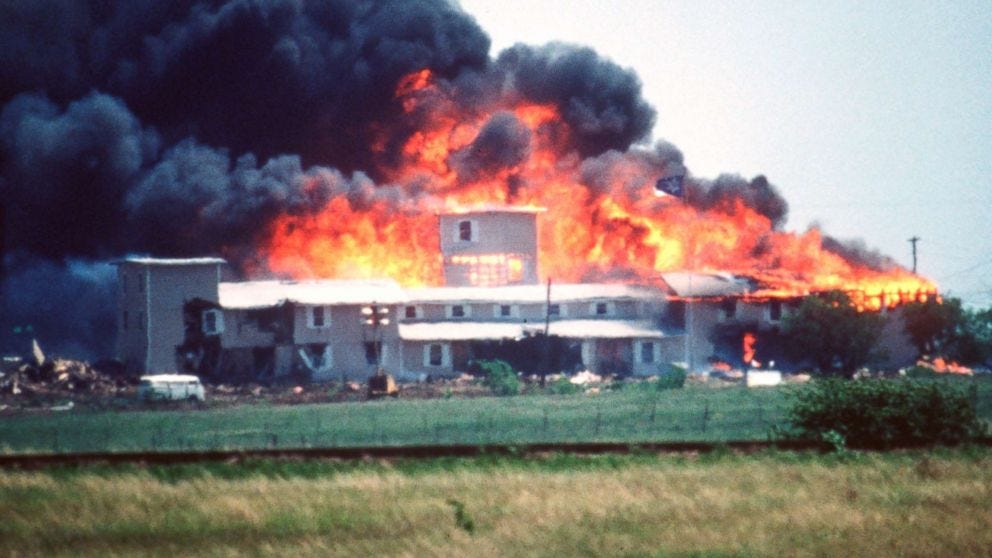
In the twenty years that followed, extremist “sovereign citizen” and militia movements flourished, so by the time scofflaw cattle rancher Cliven Bundy challenged a Federal Bureau of Land Management enforcement in 2014 the conditions were ripe for a massive standoff complete with military checkpoints and sniper positions. Decades of cumulative federal reluctance to shed blood, coupled with Bundy’s legitimate threat of retaliatory warfare, drove the feds to blink and back down from their enforcement action.
The January 6 coup attempt is a direct outgrowth from the government’s failure to execute its authority and shut down anti-government groups more broadly. If it wasn’t already clear who the MAGA movement is built to serve, President Trump’s decision to launch his 2024 campaign in Waco unambiguously signaled a fidelity to these domestic extremists over the very constitution presidents are sworn to uphold and defend. This dynamic writ large, the growing tension between federal and state authority has manifested in concrete policy disputes: funding allocations, enforcement of court orders, and jurisdictional conflicts. These aren't merely administrative disagreements but fundamental challenges to constitutional governance itself.
All 23 State Attorneys General should prepare to descend on the Office of Management and Budget in Washington, DC, physical court order in hand, to ensure that the Supreme Court is honored and the spigot is turned back on. Unarmed but amassed in the thousands, a phalanx of National Guardsman from all 23 states should stand behind the civilian plaintiffs as a last-ditch force to physically seize control over the OMB if administration officials rebuff the AGs.
We still have a way to go before the battle over a lawsuit filed by 23 States Attorneys General challenging an illegal freeze of federal funding by the Office of Management and Budget (OMB Decree M-25-11) reaches a boiling point and triggers extraordinary action from the states. But every indication suggests Trump will continue defying restraining orders and injunctions, even if they are upheld by the Supreme Court. Should that come to pass, a failure to stand up and forcefully execute the court’s decision would result in the loss of much more than the funding in question.
States using military force to compel federal compliance runs counter to established constitutional law and historical precedent, but unprecedented circumstances command new and creative solutions. All 23 State Attorneys General should prepare to descend on the Office of Management and Budget in Washington, DC, physical court order in hand, to ensure that the Supreme Court is honored and the spigot is turned back on. Unarmed but amassed in the thousands, a phalanx of National Guardsman from all 23 states should stand behind the civilian plaintiffs as a last-ditch force to physically seize control over the OMB if administration officials rebuff the AGs.
Smooth and seamless coordination will be crucial to the success of the operation. One Attorney General (likely Letitia James representing New York, the lead state on the lawsuit) will be designated to speak on behalf of the group. Congress, the courts, the military, and local DC leadership will all receive considerable advance notice. One state’s National Guard will command the entire group, with exceptionally clear communication systems and chain of command. Concrete plans for de-escalation, exit, and—god forbid—rules of engagement must be established and understood with deep clarity.
Just as Eisenhower’s show of force signaled both domestically and globally how far the US would go to maintain order in its national interest, the states must prepare to act on fierce principle as both a deterrent and an enforcement tactic of last resort, staving off the even more destabilizing risk of full-blown violent revolution.
Even when executed with the utmost care and precision, a battalion of 23 AGs flanked by 23 State National Guards still invites potential escalation and retaliation from a fully lawless president in a moment of unprecedentedly high stakes. Participants must be thoroughly vetted to ensure only the most patriotic and loyal guardsmen are present, as Trump will likely attempt to federalize the National Guard just like Eisenhower did. States should anticipate this illegal order and plan in ignore it as such.
Federal Marshalls or military assets may be mobilized to push back against the AGs’ enforcement action. Indeed, taking this profound step could trigger the not insignificant possibility of a cold constitutional crisis exploding into a fully violent conflict. Protests would surge, leading Trump to lash out at the populace via the Insurrection Act, and we’re off to the races in a very dark direction.
The states cannot afford to be left flat-footed if the president dares the Supreme Court to somehow execute a ruling it has no mechanism to enforce. Just as Eisenhower’s show of force signaled both domestically and globally how far the US would go to maintain order in its national interest, the states must prepare to act on fierce principle as both a deterrent and an enforcement tactic of last resort, staving off the even more destabilizing risk of full-blown violent revolution. For the sake of our republic and the broader global stability derived from our presiding national harmony, let us hope the states never have to activate the nuclear option.
If the states must act, we can expect a long-term scrambling of the very nature of federalism as we know it. The old federalist model is already in flux, as is the US role within the liberal international order Trump’s predecessors worked tirelessly to establish. What will the world think when states converge on our nation’s capital with military assets to defend a branch of the federal government itself? If successful, will the gambit restore faith in the rule of law at home and abroad? Will Congress finally step up to its historical role and impeach the lawless president?
The founders designed our system with multiple layers of defense against tyranny. They could not have envisioned a president defying the Supreme Court while commanding today's vast federal apparatus and loyal partisans in every branch of government. But they did envision states as bulwarks of liberty, capable of defending constitutional order when other safeguards fail. If states must ultimately stand ready to physically enforce the Supreme Court's authority, it will not be an act of rebellion, but one of desperate constitutional preservation. Let us hope it never comes to that—but let us also be prepared if it does.
ICYMI, check out these related essays:
In Case of Emergency, Break Glass. Literally.
The time has come for real resistance. I want to see lawsuits a hundred times as frivolous and numerous as those Trump lodges to gum up the works. Filibusters. Invective and insults. Rouse the people with passionate rallies. Clog up the streets, shut down Congress. We need the kind of crisis-level creative problem solving not seen since Apollo 13.
Elon is an Existential Insurgent, Not a Polling Question
What is Osama bin Laden’s approval rating? How about the favorable/unfavorable on Jeffrey Dahmer? Is El Chapo above 50%? We’re not asking Americans for their opinions on these notorious criminals, so why are we polling the favorability of Elon Musk?
The Last Picture Show: A Cinematic Elegy for Innocence Lost
Peter Bogdonavich’s The Last Picture Show would be irredeemably dark were it not so culturally incisive and beautifully told. Dead wives, dead beloved town patriarchs, dead marriages, dead developmentally disabled kids. When Jeff Bridges’ character leaves to fight in Korea, we can only expect he will return either profoundly mangled or in a pine box. We all suffer the loss of youthful innocence one way or another. Death drives the people of Anarene, TX to live more fully, to take stock of what they have and cherish it. Death drives them to live fast and hard, to have ridiculous affairs and wear their shattered hearts on their dirty, dusted sleeves.





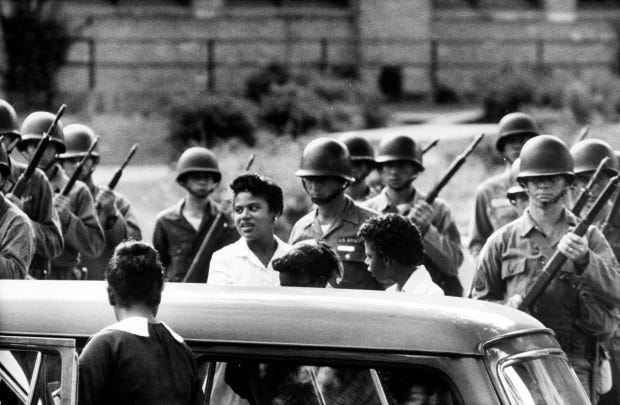
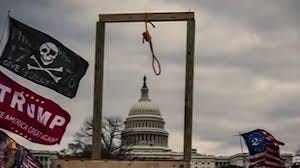
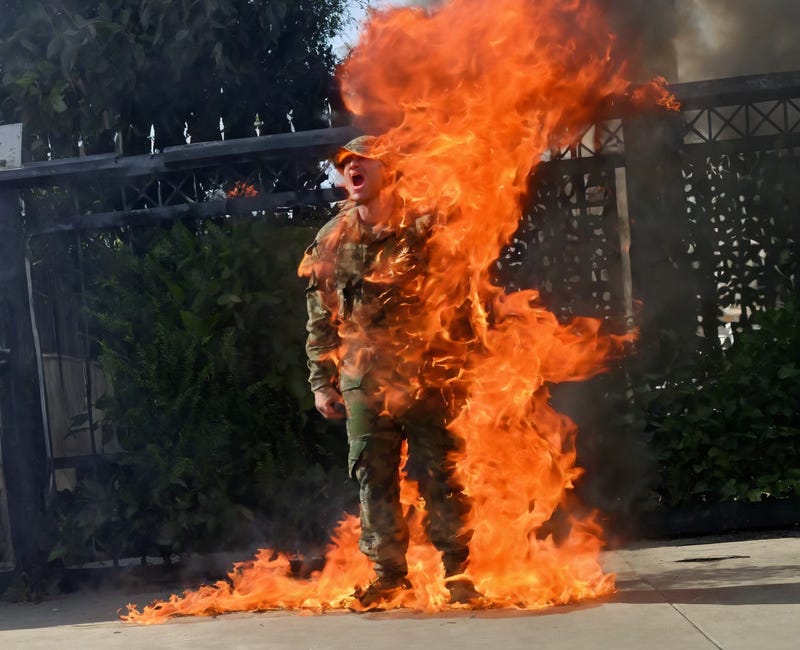

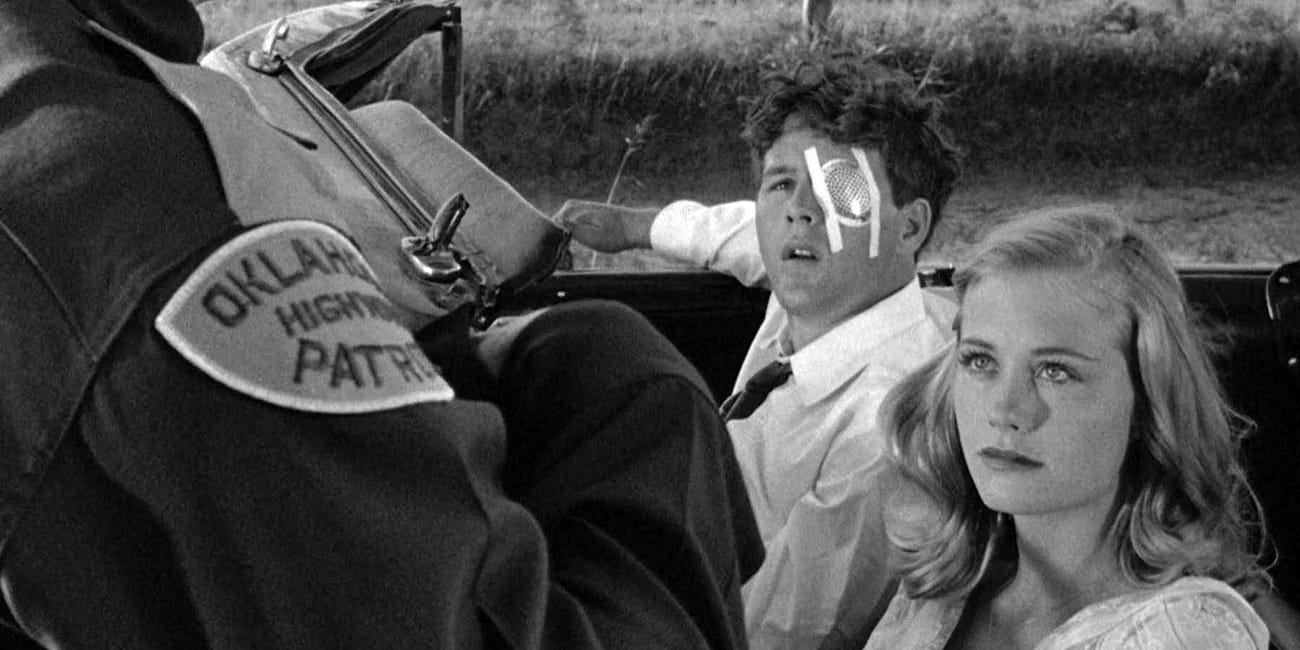
I appreciate somebody treating this situation with the urgency necessary. I will write my governor and ask that they ready the guard. We do need to be ready.
A thoughtful piece that everyone needs to be aware of. Thank you. 👍💪❗️